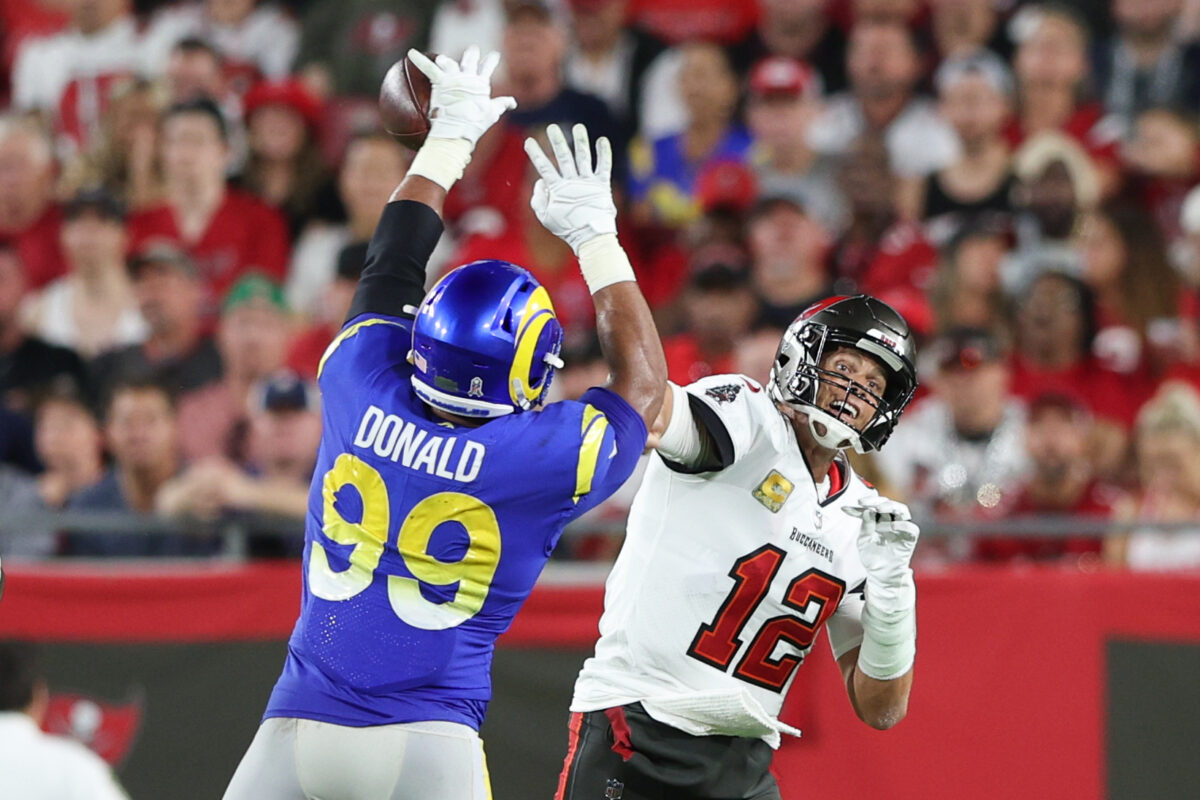In 1970, the rookie safety got off-color words of encouragement from Mr. Cowboy, who was there Saturday for Harris’ Hall of Fame speech.
Every NFL player has an archive of personal stories about their time in the league, no matter how long or short their career is. If that player is fortunate enough to enjoy a long tenure and see some measure of success, the remembrances only become richer and more plentiful. And if that player beats the long odds to one day be enshrined in Canton, every moment from their playing days becomes indelibly stamped with a new sense of historical importance.
Cliff Harris was welcomed into the Pro Football Hall of Fame on Saturday night. And to mark the occasion of the ultimate ending to a football life, the 71-year-old thought back to one of his very first moments as a Dallas Cowboy.
Imagine standing in an NFL huddle during your first home game. Your stomach is doing somersaults, your mind reeling. You search desperately for any reassuring influence, some small thing to cling to as your senses go into overdrive and your grasp on reality starts to slip. Now imagine the actual face of your franchise staring at you and informing you- in off-color language and no uncertain terms- that his success and that of the rest of the team rides, in part, on every move you’re about to make.
Welcome to the NFL, rookie.
Harris, like seemingly so many Hall of Famers, took an almost unbelievable path to the league. A second-string junior varsity quarterback in his Arkansas hometown, Harris wasn’t expected to play past 9th grade. Then he didn’t even start until moving to a new high school for his senior year. Then he received just one scholarship offer, from the practically unknown Ouachita Baptist University, where his father had played.
Undrafted out of college, he was one was of 120 free agents invited to work out for the Cowboys in Thousand Oaks, California in 1970. He was one of very few who was still around for the return trip to Dallas. After the preseason, Coach Tom Landry announced that Harris would start Week 1 at free safety, the only first-year starter on the roster.
In the old Cotton Bowl Stadium, Harris joined the huddle with the rest of the already fabled “Doomsday Defense” in a game versus the Giants. Across from the 21-year-old rookie was Bob Lilly, the very first draft choice in franchise history. Lilly was at that point a seven-time Pro Bowler who was such a foundational piece of the organization that his nickname was “Mr. Cowboy.” And he was staring right at Harris.
“Before Lee Roy Jordan called the defensive play,” Harris recalled Saturday, “Bob looked over at me and said, ‘We’re going to the Super Bowl, rookie. And I don’t want you to do anything to… mess it up.'”
The pause implied pretty clearly that Lilly had not used the word “mess” that late September day.
“I just nodded and said, ‘Yes, sir, Mr. Lilly.’
“And sure enough, we did go to the Super Bowl. But we didn’t win. Bob never made that part of the deal.”
The Cowboys finished Harris’s rookie season with a 10-4 mark and the NFC East crown. They beat the Lions and the 49ers in the playoffs, allowing just 10 points total in those two postseason games. They went on to lose Super Bowl V to the Baltimore Colts by a 16-13 score in an mishap-filled contest that went on to be remembered informally as “The Blunder Bowl.”
The Cowboys rebounded, of course, as did Harris. “Captain Crash” went to a total of five Super Bowls and won rings in two of them. He was chosen for six straight Pro Bowls and was an All-Pro four times. He was named to the NFL’s All-Decade Team for the 1970s and is a member of the Cowboys’ Ring of Honor.
Now he’s enshrined in the Pro Football Hall of Fame. And who was staring across the stage at Harris while he made his speech to mark the occasion?
Mr. Cowboy himself.
This time, though, Bob Lilly just smiled, knowing Cliff Harris hadn’t… messed it up.
[vertical-gallery id=675198]
[listicle id=675195]
[listicle id=673995]
[lawrence-newsletter]


